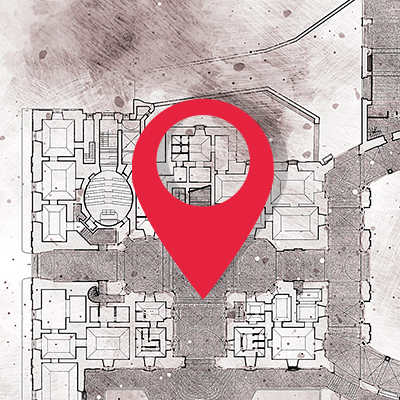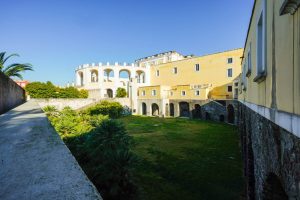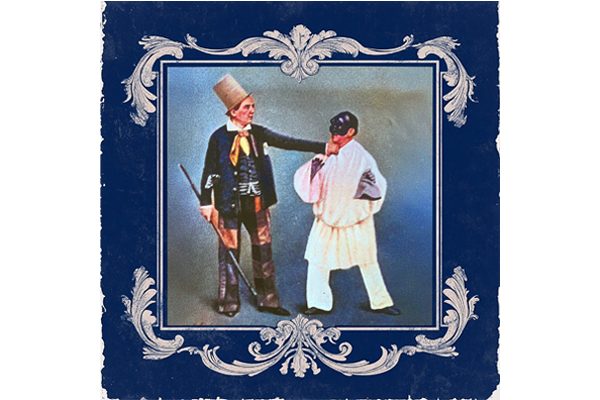point
02

Mario Gioffredo and the first project for the “Casino di Resina"
Don Luzio chose the best professionals of the kingdom for his villa, putting Mario Gioffredo (1718 – 1785), a rising star of Neapolitan architecture who had already worked on his Neapolitan palace, in charge of the construction site. The studies on classicism, particularly on the archaeological finds of Paestum, combined with an in-depth study on the texts of Palladio and Vitruvius, led the Neapolitan architect to the publication of a treatise on the fundamental architectural styles in 1768. A lover of pure and linear style, faithful to the canons of mathematics and design, Gioffredo was therefore nicknamed the “Neapolitan Vitruvius” for his ability to replicate the ancient style canons, thus distinguishing himself from the late Baroque style that was still trending in Naples.
The idea behind the “Casacalenda” country casino project, only partly realized, is an interplay between harmonies and simple shapes, with a central rectangular building and a circular arcade facing the rear facade, an elegant choice amidst the greenery of the vast estate, rich in orchards, citrus fruits and aromatic plants.
Between 1755 and the first months of 1760 the Resina estate takes shape under Gioffredo’s management: contracts are signed with various arts masters, the names of the piperno masters are listed, workers are paid, iron and wooden components are purchased, “mountain” stone quarrymen are hired, who mainly worked in the owner’s quarry, located on a side of the building. The piperno and yellow tuff needed for the Campolieto factory mostly came from Naples, Pianura and Nocera Inferiore. Piperno, due to its very particular texture characterized by isorientation of dark-gray lenticular concentrations, called flames, is widely used in construction, both as a load-bearing and ornamental element, for its particular consistency and resistance to atmospheric agents, and is present in most of the buildings in Naples. Tuff, on the other hand, was preferred to bricks due to its versatility and lower cost. In addition, the bricks that were imported from Ischia and Sorrento had to be transported by sea, with the additional need for temporary docks, while tuff was much easier to transport along the royal road
You are here

More about: the materials of the villa
-
THE PIPERNO
Due to its very particular texture characterized by the disorientation of dark-grey lenticular concentrations, called flames, it is due to its stony consistency and its resistance to wear and tear by atmospheric agents, a very widespread rock in the building field, especially in both the decorative and , and is present in many of the buildings in Naples.
-
THE TUFF
Instead, it was used in construction and was preferred over bricks due to its ductility and lower cost. Furthermore, the tuff was much easier to transport than the bricks which were imported from Ischia and Sorrento and for which transport by sea was necessary, with the setting up of makeshift marinas along the coast.





